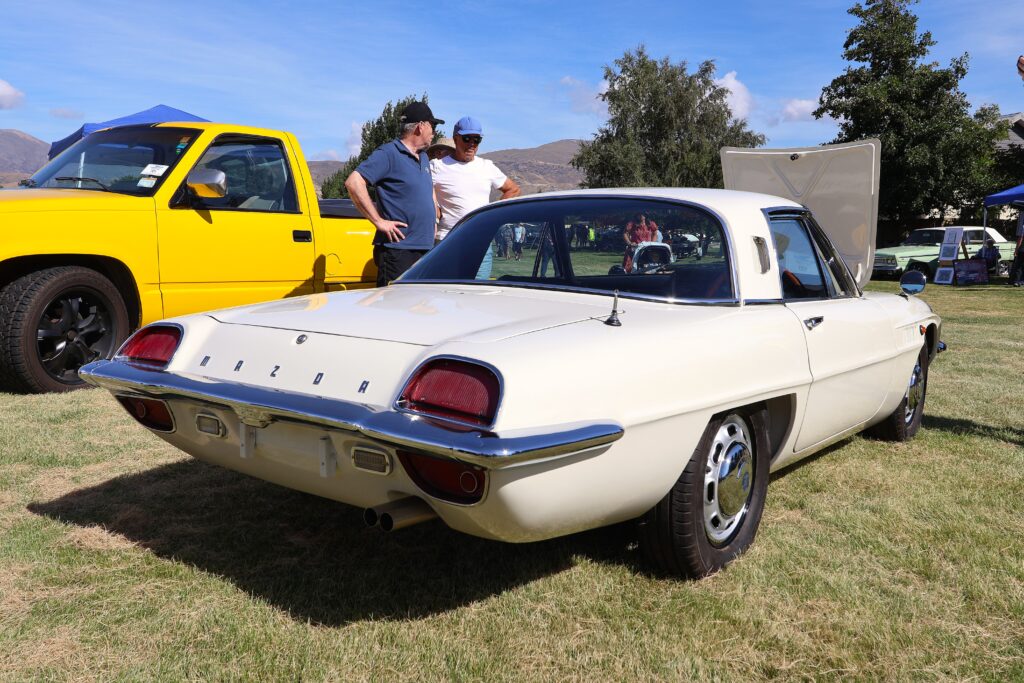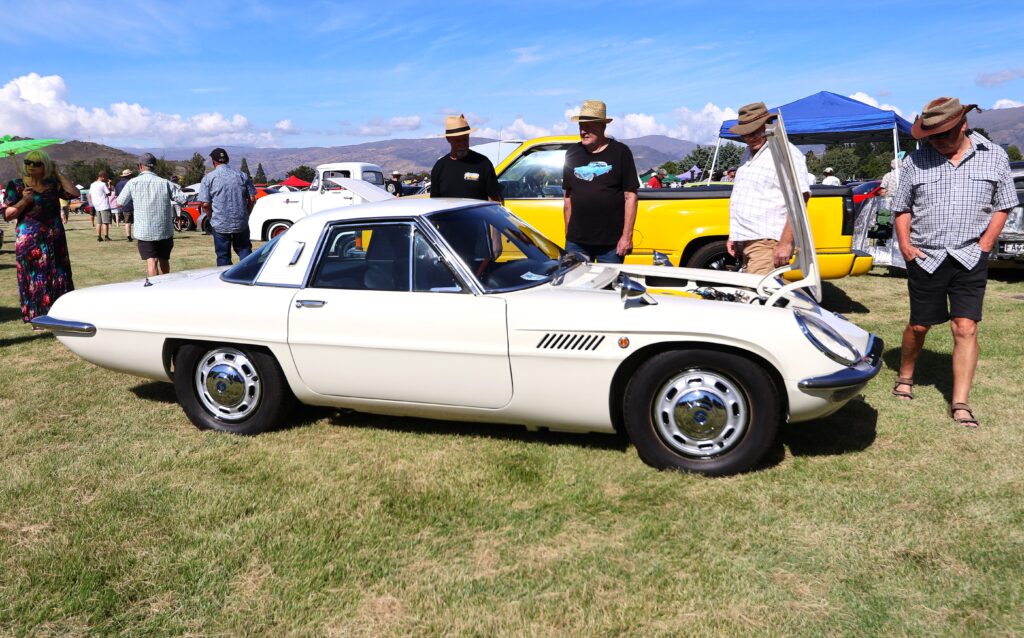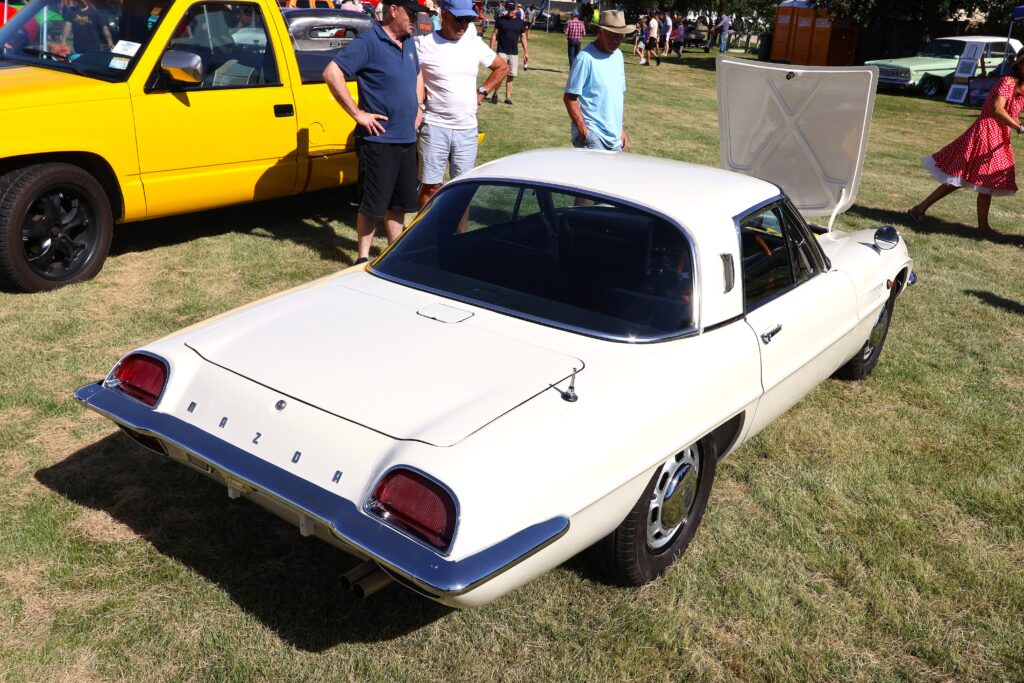One of the rarest Mazdas, and amongst one of the rarest production cars in the World, a 1967 Series 1, Cosmo made its public debut at the 2025 Cromwell Classic and Hot Rod Car Show on Saturday, January 18 this year.


Restoration journey
After a challenging 5-year restoration, its proud Cromwell owner, Mike Elford celebrated its appearance along with Dunedin specialist, Mazda rotary engine builder, Cory Wilson who trallered the car through to the show.
“There are a number of details still to attend to and fine-tune the engine and then it will at last be finished. I’m very pleased with the result,” Cory said.
Mike is extremely pleased with the end now in sight of what has been a very challenging project. The tiny jewel of Japanese motoring engenuity attracted many on-lookers at the show as it sat glistening in the sun on an appropriately brilliant Central Otago summer’s day.|
Speculation as to its origin and history ranging from “A Japanese import” to “Must have just been restored in States” was entertaining to overhear with few realising the beautifully prepared car was a product of home-grown skills.
“I spent countless hours online searching for parts for this car from all over the World. It has been a very hard job gathering all the bits and there are still a few parts to add to complete the detail bits of the car,” Mike said.
He had high praise for the quality of restoration work carried out by Cromwell car restorer, Michael Stewart and Cory who rebuilt the now very rare 10A rotary engine.
After a challenging 5-year restoration, its proud Cromwell owner, Mike Elford celebrated its appearance along with Dunedin specialist, Mazda rotary engine builder, Cory Wilson who trallered the car through to the show.
“There are a number of details still to attend to and fine-tune the engine and then it will at last be finished. I’m very pleased with the result,” Cory said.
Mike is extremely pleased with the end now in sight of what has been a very challenging project. The tiny jewel of Japanese motoring engenuity attracted many on-lookers at the show as it sat glistening in the sun on an appropriately brilliant Central Otago summer’s day.|
Speculation as to its origin and history ranging from “A Japanese import” to “Must have just been restored in States” was entertaining to overhear with few realising the beautifully prepared car was a product of home-grown skills.
“I spent countless hours online searching for parts for this car from all over the World. It has been a very hard job gathering all the bits and there are still a few parts to add to complete the detail bits of the car,” Mike said.
He had high praise for the quality of restoration work carried out by Cromwell car restorer, Michael Stewart and Cory who rebuilt the now very rare 10A rotary engine.
“It was great to be able to drive it off the trailer and into the show under its own power. I’m very pleased with the way it has come together,” Cory said.


This is one rare car
With such a small production run in its lifetime, you can’t hop down to your Repco parts agency for bits and in particular, a complete gasket set was hand-made for the 10A rotary by a local expert
With such a small production run in its lifetime, you can’t hop down to your Repco parts agency for bits and in particular, a complete gasket set was hand-made for the 10A rotary by a local expert
Hand-built by Mazda from 1967 until 1972, at a rate of one car per day, just 1,176 Cosmos were produced consisting of 343 Series I cars and 833 Series II cars, with a number of cars going to the Japanese Police for highway patrol duties while some were raced.
Mazda specialists will observe that this Series I example was built close to model changeover resulting in the inclusion of some Series II parts. It was very much a show-piece of Mazda technology and styling, setting high engineering standards and performance for sports cars worldwide, and introducing the Wankel rotary engine. It’s hard to realise that was now 55 years ago and there is little doubt that the brilliant concept has not yet died. With advances in alternative fuels, we may see a hydrogen comeback for the little screamers from Hiroshima.
New Zealand Classic Car magazine will have a full feature on the little car and its restorers in an upcoming issue.



